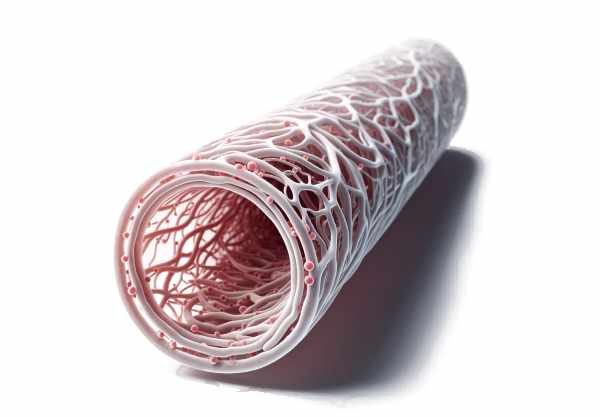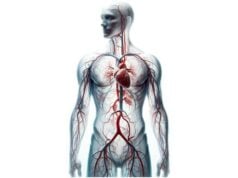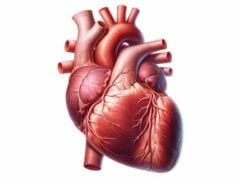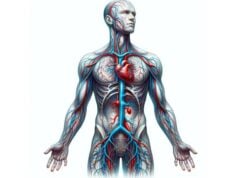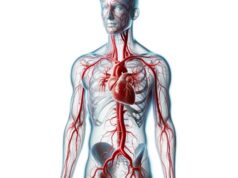Capillaries are the tiniest blood vessels in the human body and are vital for sustaining life. Despite their microscopic size, they form an intricate network that facilitates the essential exchange of gases, nutrients, and waste products between the blood and tissues. Capillaries maintain fluid balance, support immune responses, and even contribute to temperature regulation. This article provides an extensive examination of capillary anatomy, explores their dynamic physiological roles, outlines common capillary disorders, and discusses the latest diagnostic techniques and treatment modalities. In addition, it offers nutritional, supplement, and lifestyle recommendations designed to optimize capillary health and overall well-being.
Table of Contents
- Detailed Capillary Structure & Composition
- Physiological Mechanisms and Vascular Dynamics
- Capillary Disorders & Clinical Manifestations
- Diagnostic Approaches and Evaluation Techniques
- Therapeutic Approaches and Treatment Modalities
- Nutritional & Supplement Support Strategies
- Lifestyle Recommendations for Capillary Health
- Trusted Resources and Further Reading
- Frequently Asked Questions
Detailed Capillary Structure & Composition
Capillaries, the smallest vessels of the circulatory system, are uniquely designed to perform the critical function of material exchange between blood and tissues. Their minute size and extensive network ensure that every cell in the body is only a few micrometers away from a capillary, which is essential for efficient transport of oxygen, nutrients, and waste products.
The Endothelial Cell Lining
At the core of capillary structure is a single layer of endothelial cells. These cells form a continuous, semi-permeable barrier that regulates the passage of substances:
- Selective Permeability:
The tightly joined endothelial cells allow small molecules—such as oxygen, carbon dioxide, glucose, and ions—to diffuse freely, while larger proteins and cells are largely excluded. In specific capillaries, however, specialized structures can alter this permeability. - Dynamic Response:
Endothelial cells actively respond to various stimuli, such as inflammatory mediators or shear stress from blood flow. They release nitric oxide and other substances that regulate vessel tone and local blood flow.
Basement Membrane: The Structural Scaffold
Surrounding the endothelial cell layer is a thin, yet essential, basement membrane:
- Extracellular Matrix Components:
Comprised of collagen, laminin, and fibronectin, this membrane provides structural support and influences cell behavior. - Selective Barrier Role:
The basement membrane acts as a filter, contributing to the overall selectivity of the capillary wall. It also plays a role in cell signaling and tissue repair.
Pericytes: The Supportive Neighbors
Pericytes are specialized, contractile cells that envelop the capillary walls:
- Stabilization and Regulation:
Pericytes provide mechanical support and help stabilize the capillary structure. They also regulate blood flow at the microvascular level by contracting or relaxing in response to local conditions. - Repair and Angiogenesis:
In the event of vascular injury, pericytes participate in the repair process and help in new vessel formation, ensuring the integrity of the capillary network.
Capillary Types and Their Structural Variations
Capillaries vary in structure depending on their location and function, and they are typically classified into three types:
- Continuous Capillaries:
- Found in most tissues such as muscle, skin, and the brain.
- Characterized by uninterrupted endothelial linings and tight junctions that regulate molecular passage.
- Support a controlled exchange of gases and solutes while restricting large molecules.
- Fenestrated Capillaries:
- Present in tissues with high rates of molecular exchange, including the kidneys, endocrine glands, and intestines.
- Have pores (fenestrations) in the endothelial cells that allow for rapid transport of fluids and solutes.
- Their enhanced permeability facilitates efficient filtration and absorption processes.
- Sinusoidal (Discontinuous) Capillaries:
- Located in organs such as the liver, spleen, and bone marrow.
- Exhibit larger gaps in both the endothelial lining and basement membrane.
- Permit the passage of large molecules and even cells, which is critical for functions like immune cell trafficking and the processing of blood proteins.
Capillary Beds and Network Complexity
Capillaries do not function in isolation but form extensive networks known as capillary beds:
- Interconnected Networks:
Capillary beds are formed by the branching of capillaries from arterioles and their convergence into venules. This dense network maximizes the surface area available for exchange. - Precapillary Sphincters:
These muscular cuffs at the entrance of capillary beds regulate blood flow based on tissue demand. They constrict or dilate in response to local metabolic needs, ensuring that active tissues receive adequate oxygen and nutrients. - Adaptive Remodeling:
Capillary networks are dynamic and can remodel in response to chronic changes in tissue demand. For example, exercise stimulates angiogenesis, increasing capillary density in skeletal muscles to meet higher metabolic demands.
The Role of Capillary Architecture in Systemic Health
The specialized structure of capillaries is integral to maintaining homeostasis:
- Efficient Exchange:
The thin, single-cell barrier facilitates rapid diffusion of oxygen, nutrients, and waste products, ensuring cellular viability. - Fluid Balance:
The interplay between hydrostatic pressure and osmotic forces across capillary walls governs the movement of fluids, thus maintaining tissue hydration and preventing edema. - Immunological Surveillance:
The permeability of capillaries permits the transit of immune cells. Leukocytes migrate out of capillaries to target sites of infection or injury, initiating essential immune responses. - Thermoregulation:
Capillary dilation and constriction in the skin play a crucial role in regulating body temperature, demonstrating the versatility of these microvessels.
Overall, the intricate design of capillaries—from the delicate endothelial lining and supportive basement membrane to the regulatory functions of pericytes and precapillary sphincters—underpins their critical role in sustaining life. This complex architecture not only facilitates vital exchange processes but also adapts dynamically to support the body’s metabolic and regulatory needs.
Physiological Mechanisms and Vascular Dynamics
Capillaries are far more than passive conduits; they are active participants in the regulation of blood flow, nutrient delivery, and waste removal. Their physiological functions are finely tuned to support the needs of tissues and maintain systemic homeostasis.
Gas Exchange: The Lifeline of Cellular Metabolism
The primary role of capillaries in gas exchange is a cornerstone of cellular metabolism:
- Oxygen Delivery:
As oxygen-rich blood flows through capillaries, the thin endothelial barrier allows oxygen to diffuse rapidly into the surrounding tissue. This diffusion is driven by the concentration gradient between the blood and the cells, ensuring that oxygen is continuously supplied for aerobic respiration. - Carbon Dioxide Removal:
Concurrently, carbon dioxide—a metabolic waste product—diffuses from the tissue into the capillaries. The removal of carbon dioxide is critical to prevent cellular acidosis and maintain the proper pH balance in tissues. - Bidirectional Diffusion:
The design of capillaries supports simultaneous exchange processes, with oxygen entering cells and carbon dioxide being carried away. This bidirectional flow is essential for the efficient functioning of the respiratory system.
Nutrient and Waste Transport
Capillaries serve as vital channels for delivering nutrients to cells and removing metabolic waste:
- Nutrient Delivery:
Glucose, amino acids, fatty acids, and other essential nutrients are transported from the blood to the cells via capillaries. The proximity of capillaries to tissues ensures that these substrates reach cells promptly, supporting energy production and cellular growth. - Waste Removal:
Metabolic by-products, such as lactic acid and urea, diffuse into capillaries to be transported to excretory organs like the kidneys and liver. This constant removal of waste is crucial for preventing toxicity and maintaining cellular function.
Fluid and Electrolyte Balance
Capillaries play a central role in regulating the exchange of fluids and electrolytes:
- Hydrostatic and Osmotic Forces:
Fluid movement across capillary walls is governed by the balance between hydrostatic pressure (pushing fluid out) and osmotic pressure (drawing fluid in). This delicate balance maintains proper tissue hydration and prevents the development of edema. - Selective Permeability:
The capillary wall selectively permits the passage of water and small solutes while retaining larger proteins and cells. This selectivity is vital for preserving the composition of blood plasma and interstitial fluid. - Dynamic Regulation:
In response to changes in blood pressure or osmotic gradients, capillaries can adjust the rate of fluid exchange, thereby contributing to the regulation of blood volume and pressure.
Immune Surveillance and Inflammation
The capillary network is a critical component of the immune system:
- Leukocyte Extravasation:
The permeability of capillaries enables white blood cells to exit the bloodstream and migrate to sites of infection or injury. This process, known as diapedesis, is essential for initiating an effective immune response. - Inflammatory Response:
During inflammation, capillaries dilate to increase blood flow, allowing more immune cells to reach affected tissues. However, excessive dilation or increased permeability can lead to tissue swelling and contribute to inflammatory conditions. - Cytokine Signaling:
Endothelial cells can release cytokines and other signaling molecules that modulate the immune response, further emphasizing the active role of capillaries in immune surveillance.
Thermoregulation: Balancing Body Temperature
Capillaries in the skin play a pivotal role in maintaining body temperature:
- Vasodilation and Heat Loss:
When the body needs to dissipate heat, capillaries in the dermis dilate, increasing blood flow to the skin’s surface. This enhanced circulation facilitates heat loss through radiation, convection, and evaporation. - Vasoconstriction and Heat Conservation:
Conversely, in cold conditions, capillaries constrict to reduce blood flow, thereby conserving heat. This dynamic regulation of blood flow helps maintain a stable internal temperature.
Autoregulation and Perfusion Control
The microcirculation within capillary beds is subject to autoregulation:
- Precapillary Sphincters:
These muscular rings regulate blood flow into capillaries by contracting or relaxing in response to local tissue demands. They ensure that blood is directed preferentially to active tissues with higher metabolic needs. - Metabolic Control:
Local metabolites, such as adenosine and carbon dioxide, influence capillary dilation. In regions of high metabolic activity, increased levels of these substances trigger vasodilation, thereby boosting perfusion and ensuring adequate oxygen and nutrient delivery. - Shear Stress Response:
Endothelial cells detect changes in shear stress (the frictional force of blood flow) and respond by releasing vasodilators like nitric oxide. This response helps regulate blood flow and maintain capillary integrity.
In summary, the physiological dynamics of capillaries are integral to nearly every aspect of circulatory function. From facilitating gas exchange and nutrient delivery to maintaining fluid balance and supporting immune responses, capillaries are indispensable for sustaining cellular life and overall homeostasis. Their ability to adapt dynamically to varying physiological conditions underscores their critical role in the body’s intricate network of blood vessels.
Capillary Disorders & Clinical Manifestations
Although capillaries are remarkably resilient, various conditions can impair their function and structure. These disorders often result from chronic diseases, environmental exposures, or genetic predispositions, leading to significant health complications.
Capillary Leak Syndrome
Capillary leak syndrome is a condition in which the integrity of the capillary walls is compromised:
- Pathophysiology:
In this syndrome, inflammatory mediators cause the capillary walls to become excessively permeable, allowing plasma to leak into the surrounding tissues. This leakage results in edema, low blood pressure, and reduced blood volume. - Clinical Presentation:
Patients may experience sudden swelling, weight gain due to fluid accumulation, and symptoms of shock. Prompt medical attention is required to manage fluid balance and support vital organ function. - Management:
Treatment focuses on identifying and managing the underlying cause, such as severe infections or adverse reactions to medications, alongside supportive care to stabilize blood pressure and fluid levels.
Diabetic Microangiopathy
Diabetes can lead to microvascular complications that specifically affect capillaries:
- Pathogenesis:
Prolonged high blood sugar levels damage endothelial cells, resulting in thickening of the basement membrane and narrowing of capillary lumens. This process impairs blood flow and reduces nutrient exchange. - Clinical Manifestations:
Diabetic microangiopathy is a major contributor to complications like diabetic retinopathy (vision loss), nephropathy (kidney failure), and neuropathy (nerve damage). - Management Strategies:
Strict glycemic control, the use of medications to protect vascular integrity, and regular screening for complications are critical to mitigate the impact of diabetic microangiopathy.
Hypertensive Retinopathy
Chronic high blood pressure can adversely affect capillaries in the retina:
- Mechanisms of Damage:
Elevated blood pressure exerts stress on the delicate capillary networks in the eye, leading to constriction, hemorrhage, and eventual leakage of blood components. - Symptoms:
Visual disturbances, blurred vision, and in severe cases, permanent vision loss can occur. - Treatment Approaches:
Effective blood pressure management through lifestyle changes and antihypertensive medications is key to preventing further retinal damage and preserving vision.
Raynaud’s Phenomenon
Raynaud’s phenomenon is characterized by episodic constriction of capillaries in the extremities:
- Triggers and Pathophysiology:
Exposure to cold or emotional stress triggers an exaggerated vasoconstrictive response in the capillaries of the fingers and toes, leading to reduced blood flow. - Clinical Signs:
Affected areas may change color (white to blue to red), become numb, or experience tingling sensations. - Management:
Avoiding cold exposure, stress management, and using vasodilators such as calcium channel blockers can help alleviate symptoms.
Capillary Hemangiomas
Capillary hemangiomas are benign vascular tumors composed of proliferated capillary endothelial cells:
- Appearance and Impact:
These lesions typically appear as red or purple spots on the skin and can vary in size. While many hemangiomas resolve on their own, larger or problematic lesions may require intervention. - Treatment Options:
Laser therapy, surgical removal, or pharmacological agents (such as beta-blockers) may be used when the hemangioma interferes with function or causes cosmetic concerns.
Sickle Cell Disease and Microvascular Occlusion
Sickle cell disease affects capillary function through the abnormal shape of red blood cells:
- Pathophysiology:
The sickle-shaped cells can obstruct capillaries, impeding blood flow and causing painful vaso-occlusive crises. - Clinical Implications:
Repeated occlusion can lead to tissue ischemia, organ damage, and chronic pain. - Management:
Treatment includes hydration, pain management, hydroxyurea therapy, and in some cases, blood transfusions to reduce the proportion of sickled cells.
Chronic Venous Insufficiency
Chronic venous insufficiency is a condition in which the venous return is impaired, impacting capillary function:
- Underlying Mechanisms:
Faulty venous valves cause blood to pool in the lower extremities, increasing capillary pressure and leading to edema, skin discoloration, and ulceration. - Symptoms:
Patients often experience leg swelling, aching, and in advanced cases, skin breakdown. - Management Strategies:
Compression therapy, lifestyle modifications, and in some cases, surgical interventions can improve venous return and alleviate symptoms.
In each of these disorders, the common theme is the disruption of capillary integrity and function. Whether due to systemic diseases like diabetes and hypertension or localized conditions such as Raynaud’s phenomenon, the impairment of capillary function can lead to significant health consequences. Early diagnosis, coupled with targeted treatment, is essential for preserving capillary health and preventing further complications.
Diagnostic Approaches and Evaluation Techniques
The diagnosis of capillary disorders requires a multifaceted approach that combines clinical evaluation with advanced imaging and laboratory tests. Accurate diagnosis is critical to guide effective treatment strategies and prevent the progression of capillary-related diseases.
Clinical Evaluation and History Taking
- Detailed Patient History:
The diagnostic process begins with a thorough history that includes the duration and severity of symptoms such as swelling, pain, visual disturbances, or skin changes. Physicians also inquire about risk factors such as hypertension, diabetes, or exposure to environmental toxins. - Physical Examination:
A meticulous physical exam is performed to assess signs of capillary damage. This includes inspecting the skin for petechiae, purpura, telangiectasia, or other vascular abnormalities. Blood pressure measurements and pulse assessments are also essential components of the evaluation.
Laboratory Tests
Laboratory investigations provide crucial information about the systemic conditions that may affect capillary health:
- Complete Blood Count (CBC):
CBC helps in identifying abnormalities in red and white blood cell counts and platelet levels, which can indicate underlying inflammatory or hematologic disorders. - Blood Chemistry Panels:
Assessing parameters such as glucose, electrolytes, and renal function can reveal systemic conditions like diabetes or kidney disease that indirectly affect capillaries. - Inflammatory Markers:
C-reactive protein (CRP) and erythrocyte sedimentation rate (ESR) are commonly measured to evaluate the presence and degree of systemic inflammation.
Imaging Techniques
Imaging studies offer a visual assessment of capillary integrity and blood flow:
- Capillaroscopy:
A non-invasive method, capillaroscopy uses a microscope to examine capillaries, especially in the nailfold area. It is valuable for diagnosing conditions like Raynaud’s phenomenon and scleroderma by revealing structural abnormalities. - Doppler Ultrasound:
This technique assesses blood flow within vessels, including capillaries. It is particularly useful in evaluating chronic venous insufficiency and identifying areas of impaired perfusion. - Magnetic Resonance Angiography (MRA):
MRA provides detailed images of the vascular network without the use of ionizing radiation. It is beneficial for detecting vascular stenosis, occlusions, or malformations that affect capillary flow. - Fluorescein Angiography:
Commonly used in ophthalmology, this procedure involves the injection of a fluorescent dye to visualize retinal capillaries. It helps in diagnosing diabetic retinopathy and hypertensive retinopathy by highlighting areas of leakage or blockage.
Invasive Diagnostic Procedures
In certain cases, more invasive techniques may be required:
- Biopsy:
A skin or tissue biopsy can provide histopathological evidence of capillary damage. Biopsies are particularly useful for diagnosing vasculitis, capillary hemangiomas, or other inflammatory conditions. - Genetic Testing:
For hereditary disorders such as sickle cell disease or hereditary hemorrhagic telangiectasia, genetic tests confirm the diagnosis by identifying specific mutations that impact capillary function.
By integrating clinical findings with laboratory and imaging studies, healthcare providers can form a comprehensive picture of capillary health. This multi-pronged diagnostic approach is essential for tailoring treatment plans that address the specific underlying causes of capillary dysfunction.
Therapeutic Approaches and Treatment Modalities
Treating capillary disorders involves a combination of pharmacologic interventions, non-pharmacologic therapies, and, in some cases, surgical procedures. The choice of treatment depends on the specific condition and its severity, as well as the patient’s overall health status.
Pharmacologic Interventions
Medications play a pivotal role in managing capillary disorders:
- Antihypertensive Agents:
Controlling blood pressure is critical for preventing capillary damage in conditions such as hypertensive retinopathy. Medications like ACE inhibitors, beta-blockers, and calcium channel blockers help reduce the pressure exerted on capillary walls. - Diuretics:
Used primarily in conditions like chronic venous insufficiency and capillary leak syndrome, diuretics reduce fluid overload, thereby lowering capillary pressure and alleviating edema. - Vasodilators:
Drugs such as nifedipine and nitroglycerin relax the vascular smooth muscle, improving blood flow in conditions like Raynaud’s phenomenon. - Antiplatelet/Anticoagulant Therapy:
In diseases such as diabetic microangiopathy and sickle cell disease, antiplatelet or anticoagulant medications help prevent blood clots and enhance capillary circulation. - Corticosteroids and Immunosuppressants:
For inflammatory capillary conditions such as vasculitis, these drugs reduce inflammation and immune-mediated damage to the capillary walls.
Non-Pharmacologic Strategies
Complementary therapies can support and enhance pharmacologic treatment:
- Compression Therapy:
Compression stockings are effective in managing chronic venous insufficiency by promoting venous return and reducing capillary pressure in the lower extremities. - Lifestyle Modifications:
Diet, exercise, and smoking cessation are foundational interventions that can improve overall vascular health and reduce the risk of capillary damage. - Hydration and Pain Management:
Maintaining adequate hydration and using appropriate analgesics are particularly important in conditions like sickle cell disease to prevent vaso-occlusive episodes.
Surgical and Interventional Procedures
For patients with severe or refractory capillary disorders, surgical intervention may be necessary:
- Laser Therapy:
Used primarily for capillary hemangiomas and certain retinal vascular lesions, laser therapy can shrink abnormal capillaries and improve both function and cosmetic appearance. - Surgical Excision:
In cases where capillary tumors or hemangiomas cause functional impairment or significant cosmetic concerns, surgical removal may be indicated. - Endovenous Laser Therapy (EVLT):
A minimally invasive procedure used in chronic venous insufficiency, EVLT targets dysfunctional veins, indirectly relieving pressure on capillaries. - Angioplasty and Stenting:
Although more commonly associated with larger vessels, these procedures can restore blood flow in cases where blockages in upstream vessels adversely affect capillary perfusion.
Emerging Therapies
Innovative treatments are on the horizon and hold promise for future management:
- Gene Therapy:
Research into gene therapy for conditions like sickle cell disease aims to correct genetic defects at the molecular level, potentially improving capillary function and reducing complications. - Regenerative Medicine:
Advances in stem cell research and tissue engineering may eventually allow for the repair or regeneration of damaged capillary networks. - Biologics:
Targeted biological therapies that modulate specific inflammatory pathways are being investigated for conditions such as vasculitis, offering hope for more precise treatment with fewer side effects.
In summary, effective management of capillary disorders requires a personalized approach that combines multiple treatment modalities. By addressing both the underlying causes and the direct manifestations of capillary dysfunction, clinicians can significantly improve patient outcomes and enhance overall vascular health.
Nutritional & Supplement Support Strategies
A balanced diet and targeted supplementation can play a crucial role in promoting capillary health. Proper nutrition not only supports the structural integrity of capillaries but also enhances their functional capacity to exchange gases, deliver nutrients, and remove waste products.
Essential Vitamins and Minerals
Certain vitamins and minerals are particularly beneficial for maintaining healthy capillaries:
- Vitamin C:
As a potent antioxidant, vitamin C strengthens capillary walls by supporting collagen synthesis. It also aids in the repair of damaged tissues and reduces the risk of capillary fragility. - Vitamin E:
This fat-soluble vitamin protects capillaries from oxidative stress and inflammation, ensuring smooth blood flow and reducing the risk of vascular complications. - B Vitamins:
A group of B vitamins, including B6, B12, and folate, plays a role in homocysteine metabolism. Elevated homocysteine levels are associated with vascular damage, so adequate intake helps maintain capillary health. - Magnesium and Zinc:
These minerals support proper vascular tone and cellular repair processes, further contributing to the integrity of the capillary network.
Omega-3 Fatty Acids and Other Essential Fatty Acids
- Omega-3 Fatty Acids:
Found in fish oil and certain plant sources, omega-3 fatty acids have strong anti-inflammatory properties. They improve endothelial function and help maintain the elasticity and flexibility of capillary walls. - Other Polyunsaturated Fatty Acids:
These essential fats contribute to membrane fluidity and support overall vascular health by reducing systemic inflammation.
Herbal Supplements for Vascular Health
Certain herbal supplements have been traditionally used to enhance circulation and support capillary integrity:
- Ginkgo Biloba:
Ginkgo biloba extract improves blood flow by dilating blood vessels and reducing blood viscosity. It is often used to alleviate symptoms of poor circulation. - Horse Chestnut Extract:
Known for its ability to reduce capillary permeability, horse chestnut extract can help manage symptoms of chronic venous insufficiency and improve capillary function. - Other Botanicals:
Herbs like bilberry and hawthorn are also reputed to support vascular health, although clinical evidence varies.
Antioxidants and Enzyme Support
- Coenzyme Q10 (CoQ10):
CoQ10 is crucial for energy production in cells and acts as a powerful antioxidant, protecting capillaries from oxidative damage. - N-acetylcysteine (NAC):
NAC serves as a precursor to glutathione, a major antioxidant that helps maintain cellular redox balance and protects the vascular endothelium. - Other Antioxidants:
Including polyphenols from green tea, resveratrol from grapes, and flavonoids from various fruits and vegetables, these compounds contribute to overall vascular resilience.
Hormonal and Regulatory Supplements
- Melatonin:
Beyond regulating sleep cycles, melatonin possesses antioxidant properties that help mitigate oxidative stress on capillary walls. Its role in modulating inflammatory responses further supports vascular health.
Integrating these nutritional strategies and supplements into daily life can significantly bolster capillary integrity and function. A diet rich in fruits, vegetables, whole grains, lean proteins, and healthy fats, complemented by targeted supplementation, provides a robust foundation for optimal vascular health and enhanced systemic circulation.
Lifestyle Recommendations for Capillary Health
Maintaining healthy capillaries extends beyond medical treatment and proper nutrition—it involves a series of lifestyle choices that support overall cardiovascular well-being. Adopting healthy habits can protect capillary integrity, improve blood flow, and reduce the risk of chronic vascular conditions.
Dietary Choices and Hydration
- Balanced Diet:
Emphasize a diet rich in antioxidants, vitamins, and minerals by consuming plenty of fruits, vegetables, whole grains, and lean proteins. A balanced diet helps reduce inflammation and supports the structural integrity of capillaries. - Hydration:
Drinking adequate water daily is essential for maintaining blood volume and ensuring that capillaries function efficiently. Proper hydration helps regulate fluid balance and supports the exchange processes in capillaries.
Regular Physical Activity
- Exercise:
Regular aerobic and resistance exercise improves overall cardiovascular health by enhancing circulation and strengthening the heart. Activities such as brisk walking, jogging, cycling, and swimming stimulate capillary growth (angiogenesis), ensuring better tissue perfusion. - Flexibility and Stretching:
Incorporate stretching and flexibility exercises to improve muscle tone and reduce the risk of injury, which in turn supports a healthy vascular system.
Smoking Cessation and Alcohol Moderation
- Quit Smoking:
Smoking is a major risk factor for capillary damage. Quitting smoking can lead to significant improvements in blood vessel health, reduce oxidative stress, and lower the risk of capillary-related complications. - Moderate Alcohol Consumption:
Limiting alcohol intake is important, as excessive alcohol can harm the vascular system. Moderate consumption helps preserve capillary function and overall cardiovascular health.
Stress Management and Sleep
- Stress Reduction:
Chronic stress elevates cortisol levels, which can have a deleterious effect on the vascular system. Engaging in stress-relieving activities such as meditation, yoga, and deep breathing exercises supports overall capillary health. - Adequate Sleep:
Quality sleep is essential for the body’s repair processes, including the maintenance of the vascular system. Aim for 7–9 hours of sleep per night to facilitate cellular recovery and reduce inflammation.
Environmental and Occupational Factors
- Avoid Exposure to Toxins:
Limit exposure to environmental pollutants, chemicals, and toxins that can adversely affect vascular health. Use protective equipment if you work in environments with harmful substances. - Maintain a Clean Environment:
Keeping your living and working spaces clean helps reduce exposure to allergens and pollutants that can contribute to systemic inflammation and capillary damage.
By incorporating these lifestyle modifications into daily routines, individuals can create a strong foundation for maintaining capillary health. These proactive measures not only support the integrity of the vascular system but also contribute to overall cardiovascular fitness and improved quality of life.
Trusted Resources and Further Reading
Staying informed about capillary health and related vascular issues is essential for both patients and healthcare professionals. A variety of reputable sources offer in-depth insights, the latest research findings, and practical guidance on managing capillary-related conditions.
Recommended Books
- “The Cardiovascular System at a Glance” by Philip I. Aaronson:
This book provides an accessible overview of the cardiovascular system, including detailed chapters on capillary structure and function. It is a valuable resource for students and professionals alike. - “Vascular Biology in Clinical Practice” by Stephen C. Textor:
A comprehensive guide that explores the complexities of vascular biology, offering insights into the role of capillaries in health and disease. - “Pathophysiology of Heart Disease” by Leonard S. Lilly:
This text delves into the mechanisms underlying cardiovascular diseases, including those that affect capillaries, and is an essential reference for understanding the clinical implications of vascular dysfunction.
Academic Journals
- Circulation:
A leading journal in cardiovascular research, Circulation publishes high-quality studies on vascular health, innovative therapies, and the latest developments in capillary research. - Journal of Vascular Research:
This publication focuses on the physiology and pathology of blood vessels, providing in-depth analyses of capillary function and the mechanisms underlying vascular diseases.
Digital Tools and Mobile Apps
- MyFitnessPal:
A comprehensive app that tracks diet and exercise, helping users maintain a healthy lifestyle that supports overall vascular health. - Blood Pressure Monitor:
This app aids in the regular tracking of blood pressure, which is critical for maintaining capillary integrity. - Headspace:
A mindfulness and meditation app that assists in stress reduction, indirectly supporting vascular and capillary health.
These resources provide valuable information and practical tools for anyone interested in furthering their understanding of capillary health and its impact on overall well-being. Whether you are a patient seeking guidance or a healthcare professional in need of the latest research, these trusted sources can offer reliable, up-to-date insights.
Frequently Asked Questions About Capillaries
What are capillaries and why are they important?
Capillaries are the smallest blood vessels in the body, essential for exchanging oxygen, nutrients, and waste between blood and tissues. Their thin walls enable efficient diffusion, making them crucial for maintaining cellular metabolism and overall homeostasis.
How do capillaries facilitate gas exchange?
Capillaries allow oxygen to diffuse from blood into tissues and carbon dioxide to move from tissues into the blood, driven by concentration gradients. This bidirectional exchange is vital for sustaining cellular respiration and metabolic balance.
What conditions can affect capillary health?
Several conditions can impair capillary function, including capillary leak syndrome, diabetic microangiopathy, hypertensive retinopathy, Raynaud’s phenomenon, capillary hemangiomas, and complications from sickle cell disease. These disorders can lead to impaired blood flow and tissue damage.
Which diagnostic methods are used to assess capillary disorders?
Diagnosis often involves clinical evaluation, laboratory tests (e.g., CBC, blood chemistry), imaging techniques such as capillaroscopy, Doppler ultrasound, MRA, and sometimes invasive procedures like biopsies or genetic testing to confirm specific conditions.
How can lifestyle changes improve capillary function?
Lifestyle modifications—including a balanced diet, regular exercise, proper hydration, smoking cessation, stress management, and adequate sleep—can enhance capillary health by improving blood flow, reducing inflammation, and maintaining overall cardiovascular fitness.
Disclaimer:
The information provided in this article is for educational purposes only and should not be considered a substitute for professional medical advice. Always consult a healthcare provider for personalized guidance.
If you found this guide helpful, please share it on Facebook, X (formerly Twitter), or your preferred social media platform to help spread awareness about capillary health and overall vascular wellness.


